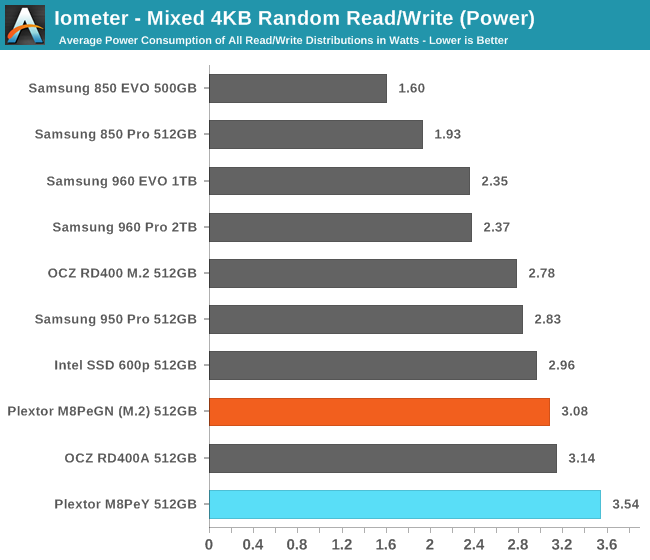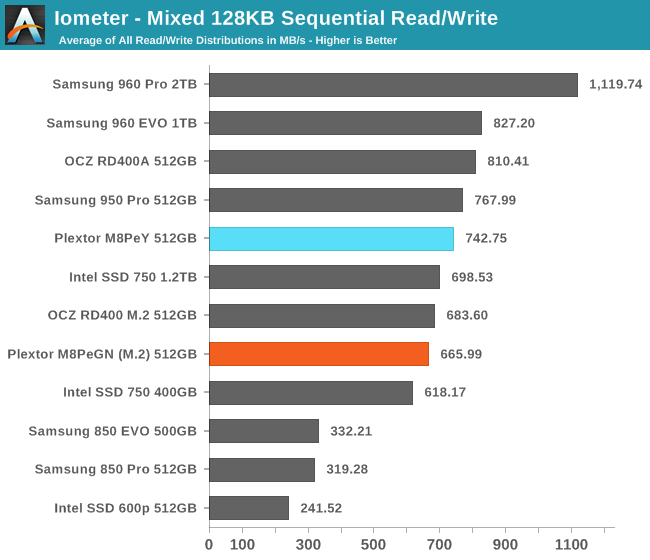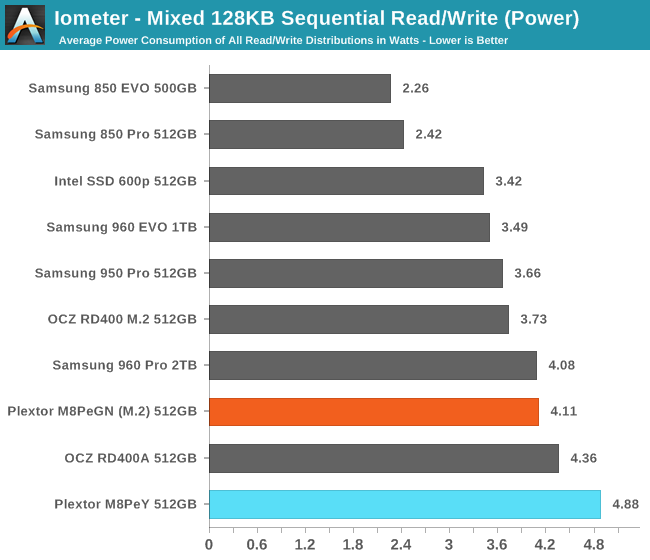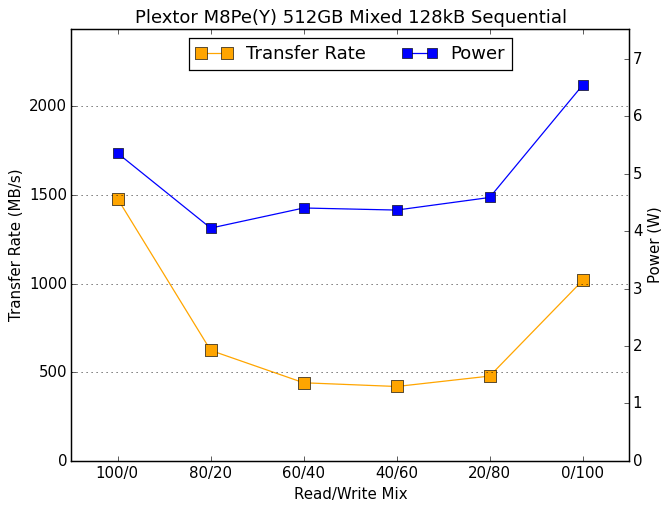The Plextor M8Pe (512GB) SSD Review
by Billy Tallis on December 14, 2016 9:00 AM ESTMixed Random Read/Write Performance
The mixed random I/O benchmark starts with a pure read test and gradually increases the proportion of writes, finishing with pure writes. The queue depth is 3 for the entire test and each subtest lasts for 3 minutes, for a total test duration of 18 minutes. As with the pure random write test, this test is restricted to a 16GB span of the drive, which is empty save for the 16GB test file.

With a relatively low queue depth, this test is mostly about the access latency of the flash itself, and it's no surprise that the heatsink makes no difference to the M8Pe's performance. The M8Pe is slightly faster than the older Intel SSD 750 and Samsung 950 Pro, but is slower than the OCZ RD400 and Samsung 960 Pro.

Power consumption is again higher than the competition, giving the M8Pe in either configuration a poor efficiency score.
 |
|||||||||
Performance increases relatively slowly as the proportion of writes increases; this is unsurprising given that we've already seen the M8Pe's strengths lie in its read speeds. The spike in performance in the final all-writes phase of the test is respectable and brings the average up to a typical score for this product segment.
Mixed Sequential Read/Write Performance
The mixed sequential access test covers the entire span of the drive and uses a queue depth of one. It starts with a pure read test and gradually increases the proportion of writes, finishing with pure writes. Each subtest lasts for 3 minutes, for a total test duration of 18 minutes. The drive is filled before the test starts.

The data rates on the mixed sequential I/O test are high enough that thermal throttling becomes a factor, and the presence of a heatsink improves the M8Pe's average by 11%. Performance in either configuration is a bit sub-par for an MLC-based PCIe SSD, but it's still at least twice as fast as any SATA SSD.

Power consumption is again the highest of any M.2 PCIe SSD, and efficiency isn't great.
 |
|||||||||
There appears to be a little bit of thermal throttling during the first phase of this test, but most of it occurs at the end when the workload is all writes.










64 Comments
View All Comments
GoMoeJoe - Friday, December 16, 2016 - link
Nand shortages ... L o L ...So much fake news. So much WoW !
frenchy_2001 - Friday, December 16, 2016 - link
"The M8Pe's consistency scores are quite low, indicating that it lacks the tight regulation of Samsung and Intel's best drives that have similar average performance."This is rather misleading and shows again the little alue your consistency metric brings.
In the case of the Plextor, it has a well defined floor around 25kops and bursts of speed above that. Although it makes it inconsistent, it has a high minimum.
This would be like complaining that a core i7 with turbo boost is inconsistent, because although it has a 4GHz floor, it sometimes boosts to 4.5GHz when possible and as such is worse than a constant i3 at 2GHz...
MrSpadge - Monday, December 19, 2016 - link
Billy is saying just that in the next paragraph. If you read both together it's like "graph A indicates... however, graph B show that it's really..."helvete - Wednesday, January 11, 2017 - link
Who would buy 1TB variant w/ a heatsink for $650 when one can take 1TB bare plus 128GB w/ a heatsink for $616 ($516 + $100). Then transfer the heatsink and the drive is still $34 cheaper and the 128GB remains remains as a free bonus:-)